Aśvinī-Charioteers of Light
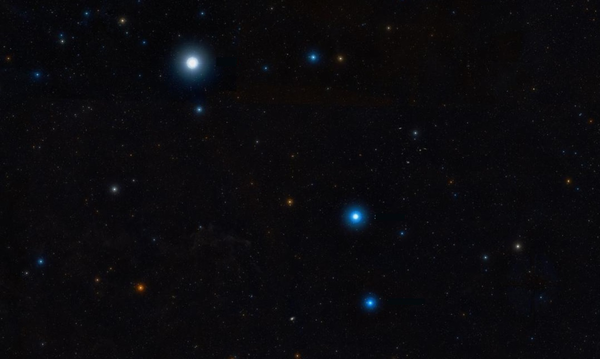
तद॒श्विना॑वश्व॒युजोप॑याताम्। शुभ॒ङ्गमि॑ष्ठौ सु॒यमे॑भि॒रश्वैः̄।
स्वं नक्ष॑त्र ह॒विषा॒ यज॑न्तौ। मध्वा॒सम्पृ॑क्तौ॒ यजु॑षा॒ सम॑क्तौ।
यौ दे॒वानां भि॒षजौ हव्यवा॒हौ। विश्व॑स्य दू॒ताव॒मृत॑स्य गो॒पौ।
तौ नक्ष॒त्रं जुजुषा॒णोप॑याताम्। नमो॒ऽश्विभ्यां कृणुमोऽश्व॒युग्भ्या̄म् ॥ २८ ॥
Tad aśvināv aśvayujopayātām |
śubhaṅ gamiṣṭhau suyamebhir aśvaiḥ |
svaṃ nakṣatraṃ haviṣā yajantau |
madhvāsampṛktau yajuṣā samaktau |
yau devānāṃ bhiṣajau havyavāhau |
viśvasya dūtāv amṛtasya gopau |
tau nakṣatraṃ jujuṣāṇopayātām |
namo’śvibhyāṃ kṛṇumo ’śvayugbhyām || 28 ||
“Thus, Aśvins should come, yoked with Horses!
Moving most swiftly to their own blissful domain with the perfectly controlled steeds,
sacrificing by the offering (haviṣā),
soaked in Honey and united by Yajus!
Who are both the healers of the gods, carrying the offering!
The messengers of Universe, the guardians of Immortality,
They both should come accepting happily [this]Nakṣatra.
We make our surrender to both Aśvins, to the (controlling) drivers of the horses.”
Twin Stars, Twin Deities
Nakṣatra vicāra (analysis of nakṣatras) is a subtle understanding of the qualitative impact of light from a single star or group of stars in the sky along the ecliptic. The ecliptic is the projected path of the Sun as viewed from Earth when we consider the geocentric model of our solar system. The 12 rāśis (the familiar zodiacal constellations) hug the ecliptic and therefore, the Sun and the other grahas (planets) can be tracked as they move through this great circle of stars. Within these rāśis are smaller groups of stars (asterisms) that have one or more yoga tārās (marker stars) enabling the ancient sky watchers to note the daily journey of the Moon and to track the other slower-moving grahas. There are 27 such groupings, collectively known as “nakṣatras.”
Activation of the various nakṣatra meanings occurs when grahas are close to the marking stars. This magnifies the themes traditionally associated with those nakṣatras in the destiny pattern of the native. This will be especially notable when a native's grahas are located within 1°30’ of the yoga tārā. It is further magnified if the rising degree (Ascendant), ruler of the first bhāva (house) and/or the Moon activates a yoga tārā. The brighter the star, the more noticeable will be the effect.
According to the natural zodiac, Aśvinī is the first nakṣatra, as its span in the zodiac is from 0° Aries to 13°20’ Aries. However, that was not the case in ancient times when the cycle of nakṣatras started with Kṛttikā[1]. Both nakṣatra orders are still in use and remain valid, as the sequence of the nakṣatras in the circle does not change with a different starting point.
The Marking Stars
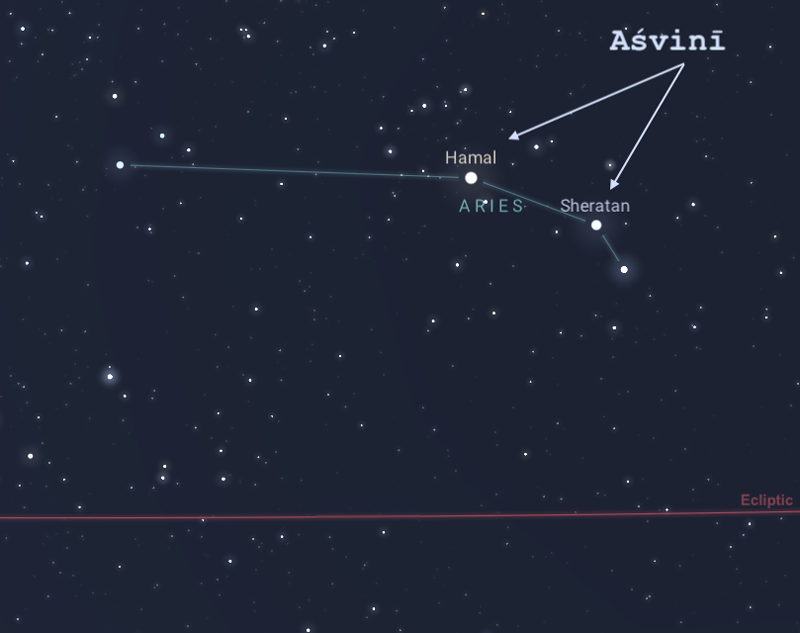
As nakṣatra vicāra starts with direct perception, let’s explore how this nakṣatra looks to a viewer, even without a telescope. There are not many bright stars in Aries close enough to the ecliptic to influence grahas that are in that zone. It is, therefore, not surprising that the two brightest stars that qualify both in visibility and proximity to the ecliptic are both considered as yoga tārās for Aśvinī nakṣatra. They are referred to in star lore by the Arabic names Al Sharatan and Hamal. Respectively, they are located at 10°20’ Aries and 13°48’ Aries. Technically, Hamal is outside of the Aśvinī Nakṣatra zone, which ends at 13°20’ Aries, but since it is the brighter of the two, it still clearly marks this region of the sky. Aries is described in some astrological traditions as a ram in the sky. The two yoga tārās of Aśvinī are located on the head of the ram.
Meet the Charioteers and Their Steeds
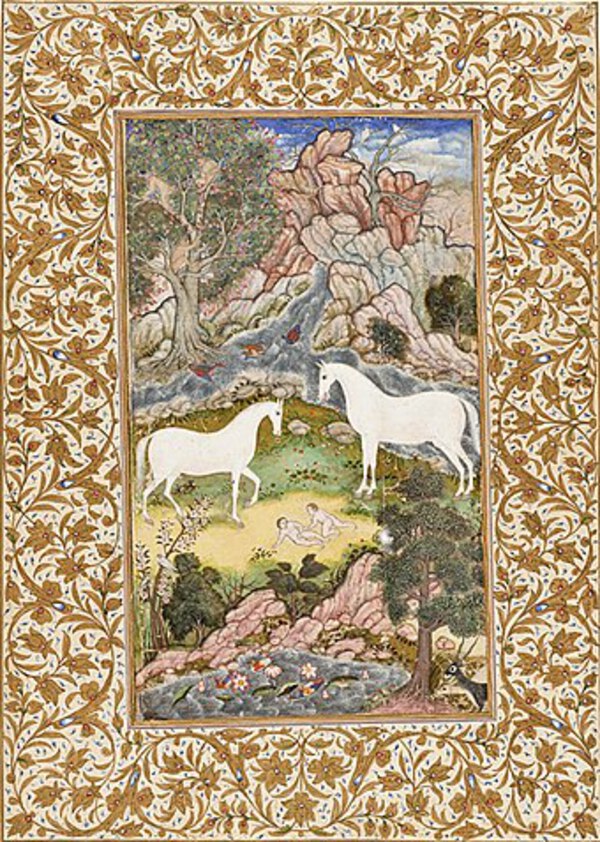
A hugely important source of the interpretation of a nakṣatra is the nakṣatra devata (deity). “Devatas” and “deities” are essentially interchangeable terms and can be thought of as various laws of nature that become more relatable when given a name and form. The texts and stories in the tradition are replete with references to these devatas and give us clues about the qualities and modus operandi of a native when a particular nakṣatra is dominant.
The devatas for Aśvinī nakṣatra are the Aświn Kumāras. They are the twin sons of Sūrya (the Sun) and his wife Samjñā. Samjñā needed to take a break from living with the Sun whose rays were harsh and burning. Without telling her husband, she installed her shadow, Chāyā, as her substitute, turned herself into a mare, and took off. It took a while for the Sun to find out about the subterfuge, but when he did, he turned himself into a stallion and went after her. As they came together, their breath mingled and from the combined intensity of their praṇa (subtle universal life energy), the twin Aświn Kumāras were born. It is quite a family lineage!
The Aświn Kumāras are the drivers of the Sun’s golden chariot heralding the dawn. Moving at breakneck speed, this charismatic pair does good deeds and is revered as the first vaidyas (doctors of Ayurvedic medicine). Indeed, they were healers of the gods, themselves.
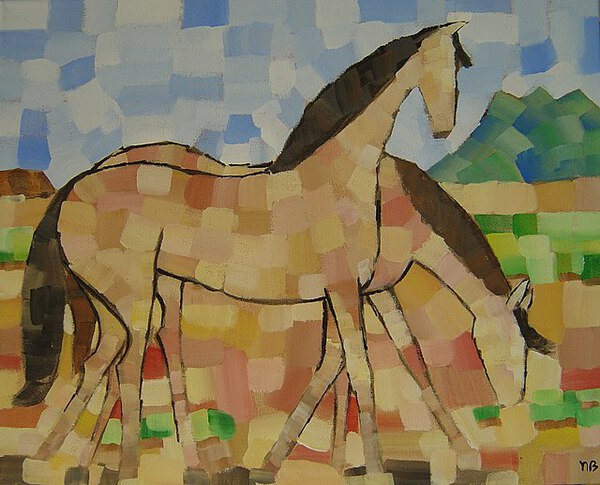
Though the Aświn Kumāras are named separately as Dasra and Nāsatya, they are invoked together as the Aświn Kumāras. Still, their names give more insight into how this nakṣatra works. Dasra means “one who accomplishes wonderful deeds, gives marvelous help, and enlightened giving.” Nasatya means“ one who is kind, helpful, friendly, and not untrue (i.e., who is true).”
Each nakṣatra has a pratimā or symbol. The surrounding stars in this region of the sky are thought to resemble a horse's head, and the two yoga tārā stars are seen as twin stars on the horse's face. Therefore, “all things horses” can be linked to this nakṣatra. The word aśvin can mean any of the following: “those possessed of horses; two charioteers; mounted on horseback; or consisting of horses,” linking together the name of the deities and the pratimā.
Putting It All Together
The pattern of stars in this section of the zodiac, the twin stars themselves, the symbol of the head of the horse, the meanings of the name of the nakṣatra and of the deities, and the myriad stories about the Aśvin Kumāras are invaluable to the interpretation of a chart of a native who has key placements in this nakṣatra.
Some of the primary themes that will be discussed in the lives of two outstanding individuals with this nakṣatra are:
- They can be inspired and energetic-something in their destiny pattern has them operating like they have limitless lungs full of air and can accomplish anything. This can carry over to their mental capacities in the form of inspired thinking.
- They are charismatic and know how to make an entrance. How about arriving everywhere in a golden chariot?
- They move! Not only do the devatas of this nakṣatra speed around in the Sun’s chariot, but the whole symbolism of horses bespeaks the swiftest form of travel, back in the day.
- There may be close sibling ties. Doesn’t get much closer than identical twins.
- They are do-gooders, be it healers, charities, or good deeds.
- Something about their face, nose, or teeth is memorable.
Just these few themes can spawn so many more through inference. Of course, how these themes will operate is totally dependent on the local conditions of the natives under consideration and this is what makes nakṣatra chart analysis so exciting—the endless permutations of how different people’s lives will reflect the light refracted through the prism of Aśvinī.
Always on the Move
Serena Williams September 26, 1981 20:28 Saginaw, MI, USA[2]
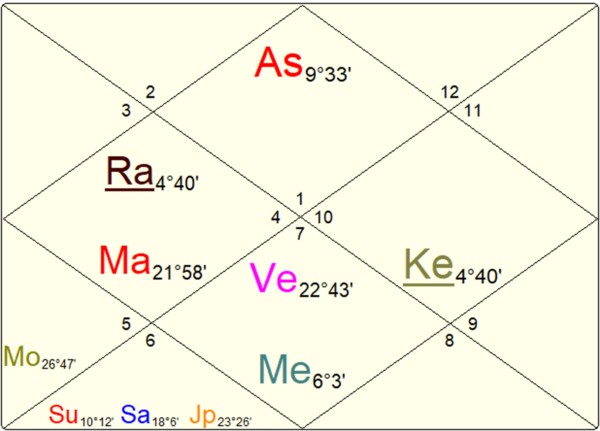
Serena Williams needs no introduction. Not only is she considered by many as the top woman tennis player, she is also an entrepreneur, fashion icon, and mother. Note that her ascendant degree is within one degree of Al Sharatan (10°20’), the yoga tārā of Aśvinī nakṣatra. She checks all the boxes for Aśvinī themes mentioned already and more.
Speedy Arrivals

Serena quickly accomplished her goal of making a mark on the tennis world, bursting on the scene when, seeded at 304 in the world, she upset World number 7, Mary Pierce, and World number 4, the legendary Monica Seles. She became the lowest-ranked player in the Open era to defeat two top-10 opponents in one tournament. And then, at 17 years old, came the big one. She defeated Martina Hingis at the US Open, becoming only the second African-American woman to ever win a slam. She arrived well ahead of her older sister who was supposed to have been the first one to break through.
On the tennis court, she is a fierce and daunting competitor with the dual weapons of incredible running speed to track down and return balls and a bullet of a serve that is not just fast but controlled and accurate. She has won 23 grand slams in total, most wins by a tennis professional, along with many Olympic single and doubles medals. Serena has been ranked number 1 for 19 continuous weeks at certain times in her career. She moves incredibly well on the court. Her reflexes are legendary, as is her physical strength and stamina. She is still competitive at just under 40 years old, and indeed, is the oldest woman to have won a grand slam, and did so when she was pregnant!

It is interesting to note in the chart that she has an unusual pattern of all of the sapta grahas (the seven grahas excluding Rāhu and Ketu) all located continuously from the fourth to the seventh bhāva. This yoga (planetary combination) is one of categories of yogas called Nabhasa Yogas[3] which are formed by distributions of the sapta grahas in the various bhāvas in the chart. This one is called a Śara Yoga. Śara means “an arrow” and such people can be “skilled in the science” of arrows. They can be violent and dissatisfied. One has to be careful with simple one-word-for-another translations, but I am sure her competitors can attest to the terror of being on the other side of the net when her serves came slamming right at them. She is a take-no-prisoner combatant and enjoys the intimidation that comes with her persona and skills.
Where in the chart might we find confluence for her speed and her aggression? For starters, her Lagna lord is Mars—the king of competition and combativeness. Don’t be fooled by the fact that it is nīca (debilitated), it is exalted in the navaṁśa chart giving it an underlying strength[4]. It is also forming a powerful Rāja Yoga (combination for pre-eminence) with Rāhu known as a Nodal Rāja Yoga.[5] And to top it off, all of these combinations occur within a Kāla Sarpa Yoga pattern,[6] greatly emphasizing the intensity and influence of Rāhu and Mars.Role Model off the Court

Outside the tennis court, Serena inspires many men, women, and children throughout the world. The Serena Williams Fund was established to promote equity; through education, gender, race, disability or anything else that stands in the way of someone achieving their goals and living their best possible life. Knowing the value of creating strong partnerships with organizations with expertise in their fields, Serena is a Unicef Goodwill Ambassador and has partnered with organizations such as: Beyond the Boroughs Scholarship Fund, The Equal Justice initiative, The Caliber Foundation and Build Africa Schools.

Serena Williams is a beautiful, charismatic woman who knows how to make an entrance. People notice her aura, energy, and unique physique, as well as her sense of style and fashion. She has a fashion company called Aneres (her name spelled backward). As a black woman entrepreneur, she breaks barriers and opens doors for the next generation of followers.
Twins in Almost Every Way
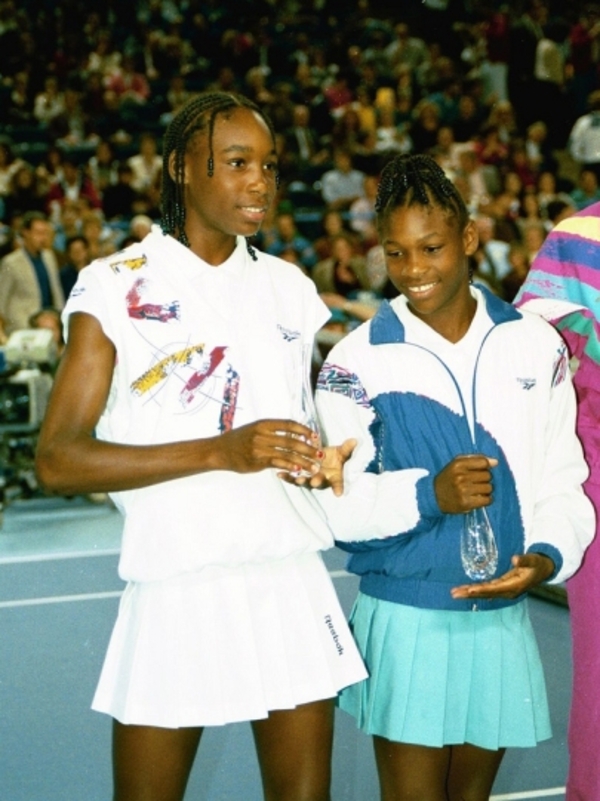
The tennis world was riveted for many years by the composite known as “The Williams Sisters.” Serena might as well be considered a twin to her sister, Venus, as they both grew up playing tennis together, living together, and creating a bond of love and support throughout their professional tennis careers and fashion careers that sustains well outside their professional lives. It was not until Serena’s marriage that their lives diverged in any meaningful way. Serena will be ending her 18-year-long Rāhu daśā[7] in September 2022, and at the age of almost 40, she might be coming to terms with retirement. The pregnancy and birth of her only child had severe complications that nearly killed her. Though still competitive, she has not to-date been able to remain injury-free and in tip-top condition to compete in women’s tennis.
All-in-all, Serena Williams is a fantastic example of how the placement of her Ascendant in the sky near the Aśvinī yoga tārā can be expressed. She is a powerful life-force and talent, an inspirational image for the next generation, who oozes charisma, is propelled to contribute meaningfully, and is a mover and shaker within the elite community of the world, yet she maintains a strong sisterhood, spiritual orientation, and family bond with deep respect toward those who support her.
In a very different way, our next native clearly exhibits many of the themes of this nakṣatra.
Charisma and Inspiration
Robert Kennedy November 20,1925 15:11 Brookline, MA, USA
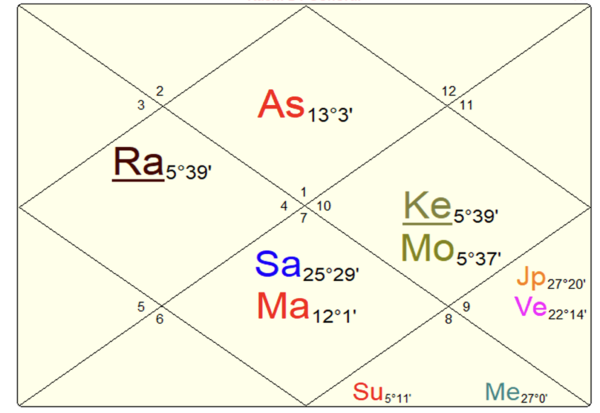
Robert (Bobby) Kennedy's Ascendant degree is 13°03’ near the alpha yoga tārā star, Hamal at 13°48’ Aries but still in the Aśvinī zone. As this degree is actually between the two yoga tārās, there is even more of an imprinting of the Aśvinī themes.
Bobby Kennedy was the younger brother of John F. Kennedy. A lawyer and national political icon for the Democratic Party in his own right, he was groomed at an early age to be part of a political dynasty. He was enthusiastic, young, full of vitality, and represented a new democratic vision that spoke to the next generation. He was a powerful and inspirational speaker, charismatic, and engaging. In a short period of time, as he worked within the political landscape, he eventually-under his brother's presidency-became the youngest attorney general in this nation's history-a controversial decision at the time due to his lack of court experience. He played crucial political roles such as: campaign director, attorney general, executive overseer, controller of patronage, chief adviser, and his brother's protector. Nobody before him had such power.
The Twins of Vitality and Charisma

Already, we can see the themes of Aśvinī popping out. Robert Kennedy’s vitality and charisma is a direct link to the Aśvin Kumāras, and with his constant presence at the side of his brother, it was as if they were twin rulers. Like Serena, close sibling ties was a striking feature for the Kennedy family, though for the men, it was a tragic legacy.
He was a political force trying to improve the lot of others and stand up for his ideals. He lived with a great amount of luster and vigor for serving to help improve his country and the lives of Americans through the policies he created and the hope given via his political life.
How do we see this in the chart? While the Ascendant is vital to astrological interpretation, his chart has many auspicious astrological combinations keying a life of great capacity and utilization. The ability of a native to fructify an auspicious karmic pattern is a function of the strength of the lagna, and especially the lagna lord. This chart shows contrasting influences on the lagna itself, as it is aspected by a strong Jupiter (sva rāśi and vargottama[8]), a strong Saturn (exalted and dig bala), and the Lagneśa, Mars. Though Mars has no particular strength in the natal chart itself, as with Serena, it is exalted in the navaṁśa chart. In addition, there is a Kāhala Yoga[9] which empowers Mars to manifest the huge Rāja Yoga of the first and tenth lords.
This particular Rāja Yoga ties the native (first bhāva) directly to the zenith of the chart (tenth bhāva), giving him a public life and government involvement. It is a key yoga for his rise. Tremendous confluence comes from Saturn creating Śaśa Yoga, one of the five Mahāpuruṣa Yogas,[10] as the lord of the tenth bhāva of power and the eleventh of gains, achieving goals, and older siblings. Again, like Serena, he runs the daśās of Mars and Rāhu at critical times. In his chart, Rāhu will give the results of Moon, and particularly of Saturn.[11] While both are influencing Rāhu two-fold, Saturn is, by far, more powerful and is making the aforementioned Rāja Yoga.
Another striking similarity to Serena's chart is the Kāla Sarpa Yoga pattern across the 4/10 axis giving more intensity to yogas found in the chart, since it is hard to create yogas when there are no 7/7 mutual aspects.
The Kennedy Clan

Bobby was tremendously close to his eight siblings, all of whom were groomed for political and business careers. He was the seventh of the nine children. At a young age, he developed a stubborn streak, thick skin, and strong will from dealing with a tough, unforgiving, and unsupportive father who never acknowledged him amongst the other famous brothers. His determination and success later in life brought him the acknowledgement from his father that he was one of the strongest in the family.
Note in the chart that powerful Saturn, as the lord of the eleventh, represents the elder brothers. Joseph Kennedy was the eldest and his father’s pick to wear the crown. He was lost in the Second World War, and it fell to John Kennedy to pick up the mantle. Saturn dominates Bobby’s lagna lord and has a powerful aspect to the lagna itself, indicating being overshadowed by elder siblings. However, they are still shoulder-to-shoulder in the house of the public (seventh bhāva) with Saturn as the lord of the tenth and Mars, lord of the first likely giving some friction, but an undeniable leadership presence.
Striking Appearance
Robert Kennedy was a handsome man. People noticed him immediately. He had very noticeable teeth (as does a horse), some of which were chipped, a prominent nose, and a bright appearance.

We see speed and travel in a very different way in Kennedy’s chart, and yet for both Serena and Bobby, it is definitely there. Robert Kennedy traveled the world as a part of the political leadership of the USA. He was involved in many domestic and international relations throughout his political career and travelled all across the USA and the globe trying to make this world a better place for all humanity—a doer of good deeds. He was also a commuter his whole life, living and working in between Washington, New York, and Massachusetts.
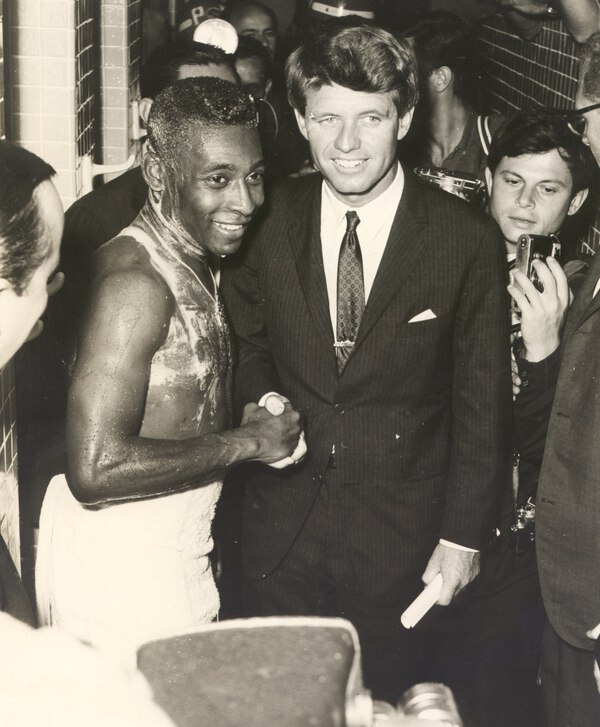
As an Aries rising, we can quickly see how travel and a life full of movement manifests for him. Jupiter is the lord of two bhāvas, indicating travel, both long distance and foreign (ninth and twelfth bhāvas). It aspects the lagna, and as we have seen, is very powerful. Key grahas are in cara rāśis (moveable rāśis) including Lagneśa (Mars), tenth lord (Saturn), and the Moon (fastest moving graha) in the tenth, as well as the nodes, Rāhu and Ketu, who mimic Saturn and Moon. And he runs the Mars and Rahu daśā sequences in the prime of his life, which adds to his activity.
He quickly met his political goals. He was only 36 years of age when his brother appointed him to be attorney general—the youngest ever. He had a sharp, quick mind and was action oriented, and undeterred by his inexperience or age. He was known for being a doer in his brother's presidential administration and had an incredible ability to organize.
Contrary to his political successes as attorney general, he was not liked by all, including those on the other side of his issues and policies. The fact that Mercury is the lord of the sixth house of enemies in the eighth house of assassins and Mercury was the bhukti lord[12] during his assassination could be one of the indications of how quickly his life ended.
A Legacy of Altruism

While Serena is definitely active in humanitarian causes, her focus in life has been on her tennis career. Though Bobby was undeniably a politician, he was, at the core, a crusader and political wonderworker—a man of community service.
He is best known for his advocacy for the civil rights movement, the fight against organized crime and Mafia, and involvement in US foreign policy: Cuban Missile Crisis, opposition to the Vietnam War, awareness of world poverty issues, and worldwide advocacy for human rights and social justice. Domestically, he fought for these rights by developing working relationships with Martin Luther King Jr, Cesar Chavez, and Walter Reuther.
As a trained lawyer, he was a natural agitator, debater, and had an authentic argumentative nature. He debated for the ideals of democracy and for the improvement of humankind throughout the world. He was outspoken for noble causes and was a ruthless opportunist who would stop at nothing to attain his ambitions. This brought him enemies but didn’t end his insatiable appetite to make the world a better place for all.
These magnificent Aśvinī natives demonstrate the power of nakṣatra vicāra when the light of the yoga tārās shines on key placements in the horoscope. We see these themes reflected in their individual ways in their lives—charisma, vitality, good looks, and being movers and shakers, altruistic, and inspirational. Thank goodness for these charioteers who are circling the world every day—leading in their respective fields and making the world a better place.
Author: Douglas Neal

Doug is a graduate of The Ayurvedic Institute’s Ayurvedic Studies Program Levels 1 and 2, Gurukula Program at VIOA in India, and is an Ayurvedic Lifestyle Consultant and Ayurvedic Practitioner, and 200-Hr AyurYoga Practitioner. He also is a student of Jyotish and offers introductory chart readings. Doug manages Dr. Vasant Lad’s Vasanta Institute of Ayuveda (VIOA) in India which operates 6-week Panchakarma and Gurukula trainings. Also, he is a business advisor and project manager for an Ayurveda lifestyle company, Banyan Botanicals. Doug is a compassionate practitioner and hopes to inspire and motivate others seeking optimal health with principles from Ayurveda.
Endnotes:
[1] Farrow, Penny. 2021. “Jewels of Destiny: The Nakṣatra Yoga Tārās.” The Cosmic Kaleidoscope Journal. June 1, 2021.
[2] n.d. "astrodatabank." astro.com. Accessed May 10, 2021. https://www.astro.com/adb-search.
[3] R. Santhhanam, translator/commentary/editing. 2018. Bṛhat Pārāśara Horā Śāstra . New Delhi: Ranjan Publications: 35:13.
[4] Navaṁśa (D-9) is one of the most important of the divisional charts. Grahas that achieve sva rāśi or exaltation in the D-9 are said to have an underlying or “hidden” strength.
[5] A nodal Rāja Yoga is when either node is in a kendra with a trikona lord or a trikona with a kendra lord. Some traditions leave out the lord of the seventh and the seventh bhāva for creating this yoga.
[6] Kāla Sarpa Yoga or yoga pattern is referred to in the oral tradition rather than in the texts. See: de Fouw, Hart & Robert Svoboda. 1996. Light on Life. Twin Lakes, WI: Lotus press: 303-305
[7] Farrow, Penny. 2018. “Timing is Everything.” The Mountain Astrologer, April/May: 14.
[8] Vargottama is when a graha is in the same rāśi in the natal chart and the navaṁśa (D-9) chart. It can be a source of strength.
[9] Kapoor, Dr. G.S., translation/commentary/annotation. 2020. Phaladīpikā . New Delhi: Ranjan Publications: 6.35-6.36
[10] Kapoor, Dr. G.S., translation/commentary/annotation. 2020. Phaladīpikā . New Delhi: Ranjan Publications: 6.1
[11] The nodes do not own any bhāvas but can produce significant effects by imitating other grahas in the horoscope. Different teaching traditions have their own ideas on this, but the consensus is they will act like their rāśi dispositor, grahas who are with them or aspecting them, and their nakṣatra dispositor. This concept is an inference from the famous story of the churning of the ocean, versions of which are ubiquitous.
[12] Farrow, Penny. 2018. "Cosmic Duets: Enthralling Harmonies or Yowling Cats." The Mountain Astrologer, June/July: 18.
Works Cited:
n.d. "Astrodatabank." astro.com. Accessed April 21, 2021. https://www.astro.com/adb-search.
de Fouw, Hart and Robert Svoboda. 1996. Light on Life. Twin Lakes, WI: Lotus press.
Dr. G.S. Kapoor, translation/commentary/annotation. 2020. Phaladīpikā. New Delhi: Ranjan Publications.
Farrow, Penny. 2021. “Diamonds of Destiny: The Nakṣatra Yoga Tārās.” The Cosmic Kaleidoscope Journal. Volume 2 June 1, 2021. Accessed June 16, 2021. https://vedicchart.com/cosmic-kaleidoscope-journal/diamonds-of-destiny-the-naksatra-yoga-taras
—. 2021. "The Cosmic Kaleidoscope Journal." www.vedicchart.com.
—. 2018. "Cosmic Duets: Enthralling Harmonies or Yowling Cats." The Mountain Astrologer, June/July: 18.
—. 2018. "Timing Is Everything." The Mountain Astrologer, April/May: 14.
R. Santhhanam, translator/commentary/editing. 2018. Bṛhat Pārāśara Horā Śāstra. New Delhi: Ranjan Publications .














